Thermal Fluid Systems
The Fluids in Advanced Systems and Technology (FAST) research group
Lane Carasik, Ph.D.
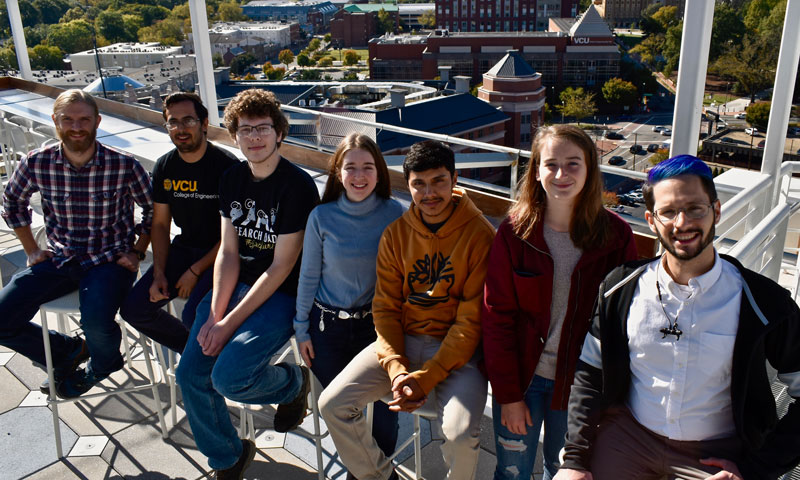

Daren Chen, Ph.D.
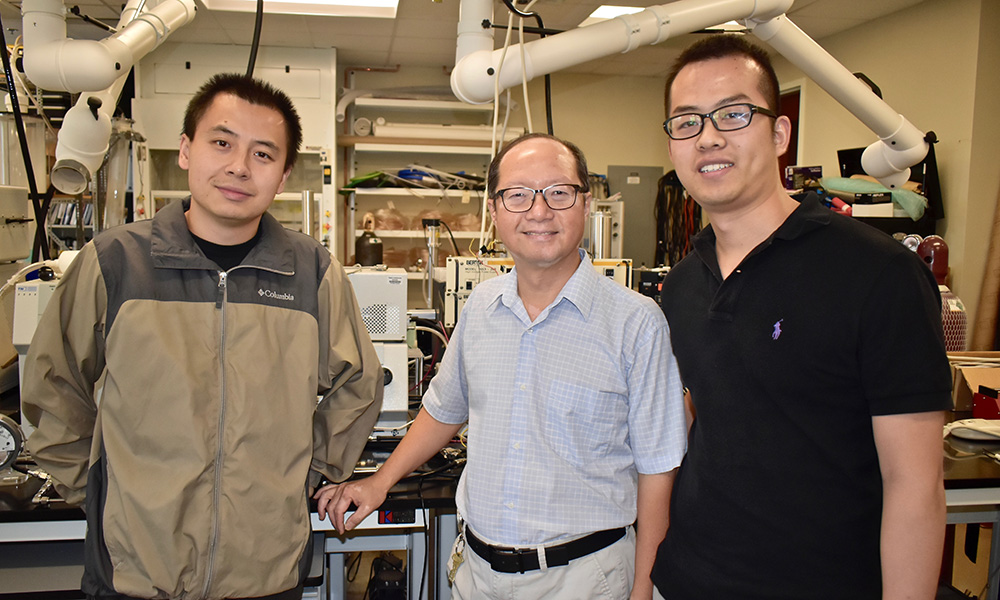

Air and Liquid Separation and Purification Laboratory
Sheng-Chien Chen, Ph.D.
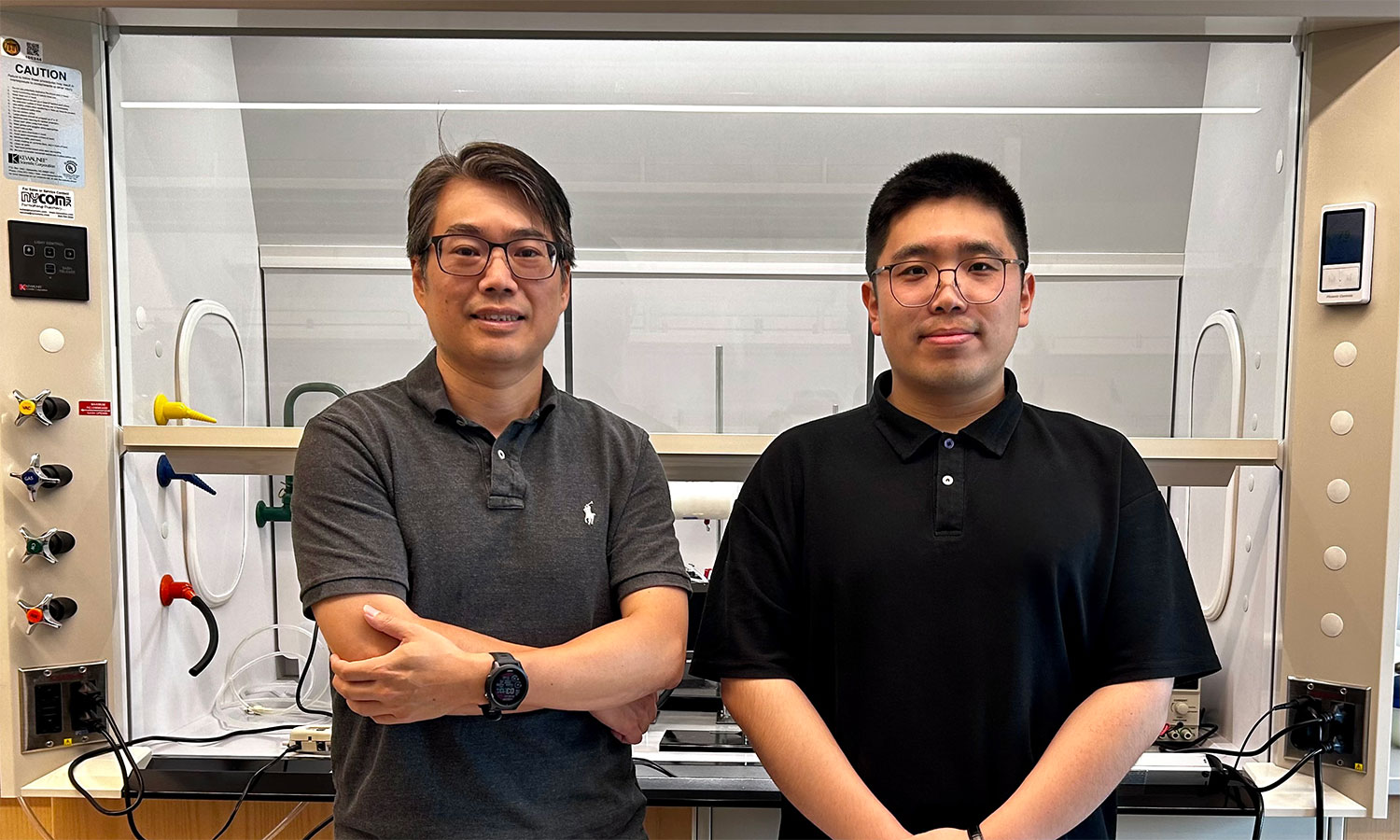

Respiratory Aerosol Research and Educational (RARE) Laboratory
Laleh Golshahi, Ph.D.
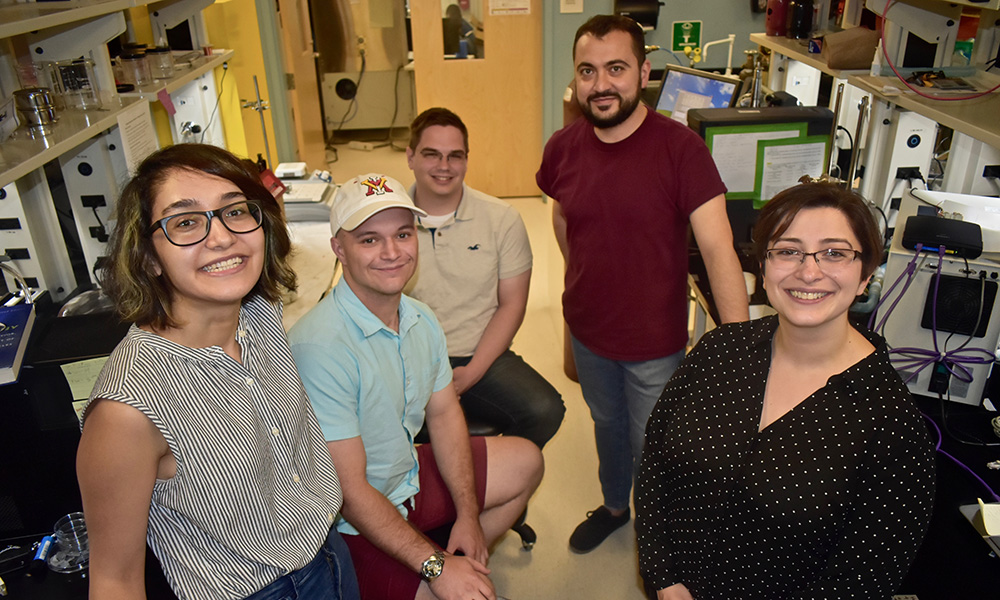

Aerosols in Medicine (AIM) Laboratory
Worth Longest, Ph.D.
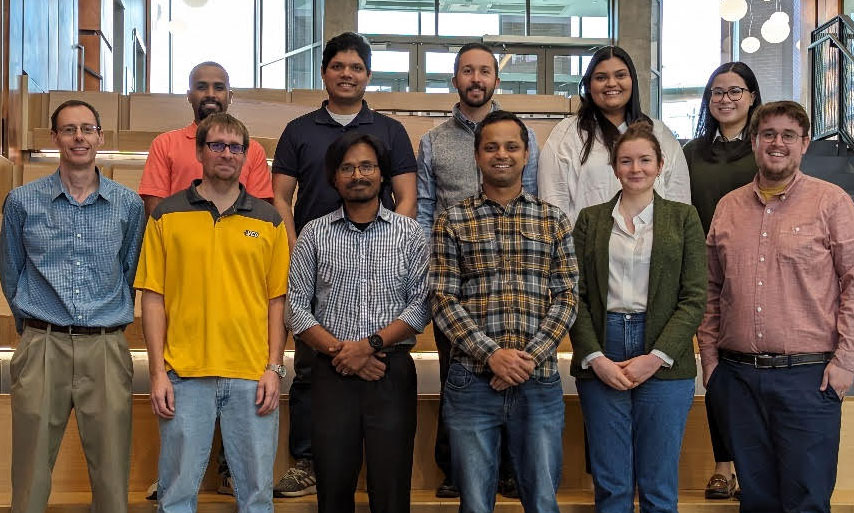

Lane Carasik, Ph.D.
Laboratory Website
The Fluids in Advanced Systems and Technology (FAST) research group is a computational and experimental thermal hydraulics group focused on enabling the development of advanced energy systems. This group utilizes and develops high fidelity computational fluid dynamics (CFD) and reduced-order design tools intended for nuclear, solar and geothermal power plants. The FAST Group conducts experimental activities for investigating fundamental phenomena in fluid systems, generating new correlations for design related data of fluid systems (heat transfer coefficients and pressure drop), and creating validation data for high fidelity CFD methods.
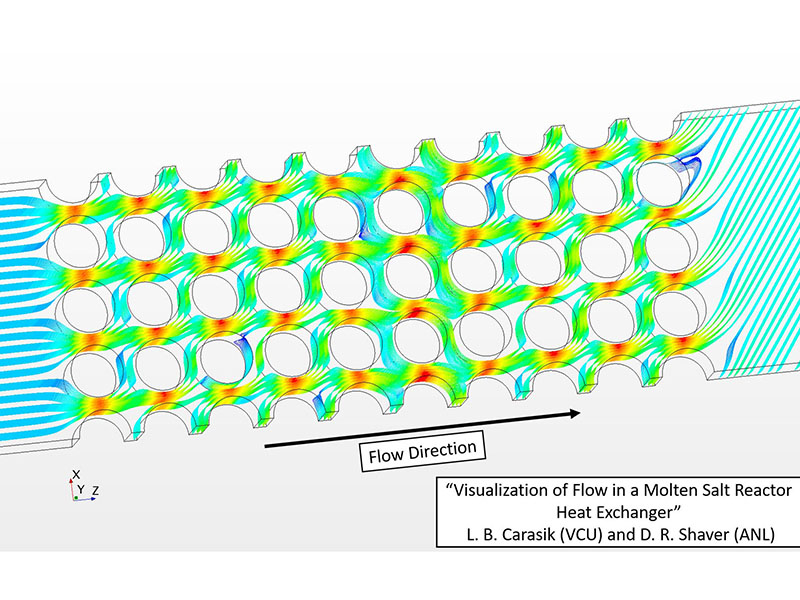
Investigating cross flow in a Molten Salt Reactor heat exchanger tube bundle is useful for learning about pressure losses and heat transfer occurring in the bundle. This information can then be used for design and optimization of compact heat exchangers for molten salt reactor applications.

Investigating flow across a cylinder is useful for learning about pressure distributions on the cylinder and eventually heat transfer from cylinder to the fluid. This can be extended to learning about flow in heat exchangers, flow over a wing, and wind loading on a building.
Daren Chen, Ph.D.
The Particle Laboratory investigates the particle science and technology required for various scientific and industrial applications, with a particular interest in the environment, indoor air quality, energy, and pharmaceutical manufacturing. Specific research areas include particle characterization and instrumentation, particle generation and synthesis, particle control and processing, and particle-based manufacturing.
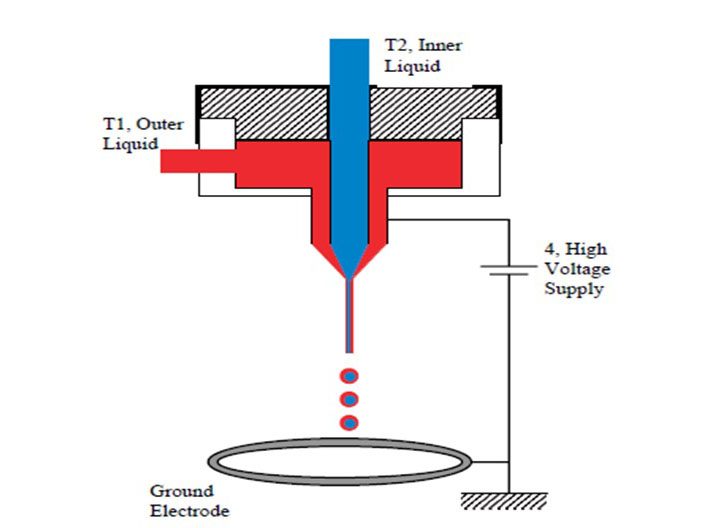
Dual-capillary electrospray (ES) technique for making composite particles (in the core-shell structure). The figure on the left is the illustration of the dual-capillary ES system; and the image on the right is the PLGA-coated Budesonide particles made by the dual-capillary ES technique.
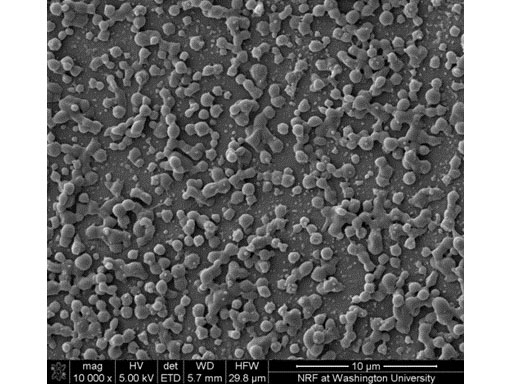

Nanometer Differential Mobility Analyzer for sizing and classifying particles in the sub-micrometer and nanometer size range (a key component for scanning mobility particle sizers).
Sheng-Chien Chen, Ph.D.
Laboratory Website
The Air and Liquid Separation and Purification Laboratory research includes the following focus areas: airborne and liquid-borne nanoparticle filtration for sustainable air and water environments; nano EHS (Nanoparticle Environmental Health and Safely) and indoor and urban air pollution control; and air pollution emission characterization.
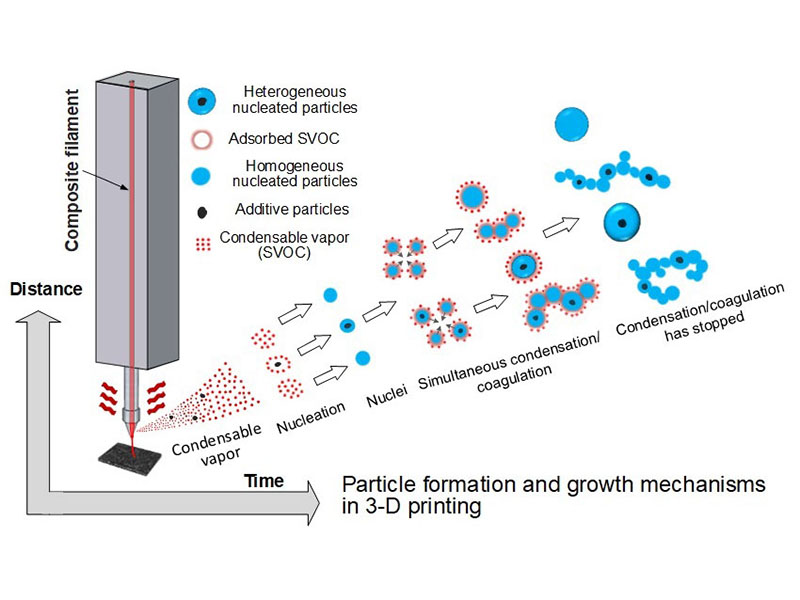
Particle formation and growth mechanisms in 3-D printing.
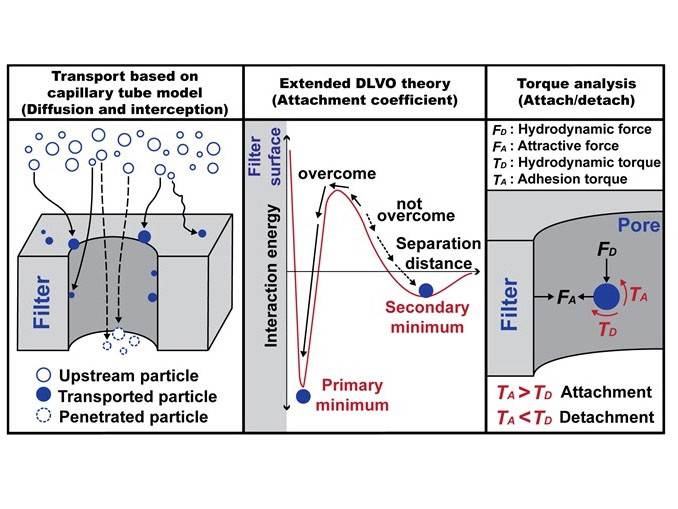
Particle transport and deposition mechanism in liquid membrane.
Laleh Golshahi, Ph.D.
The Respiratory Aerosol Research and Educational (RARE) Laboratory is focused on advancing the performance and safety of aerosol therapy and respiratory support, nasal drug delivery, and environmental exposure protection by developing in vitro-in vivo correlations (IVIVCs) that could easily be used to predict subject-specific parameters. We also use in vitro anatomically-correct 3D printed models to develop new technologies in the area of Aerosol Science and Medicine with a focus on pediatric subjects.
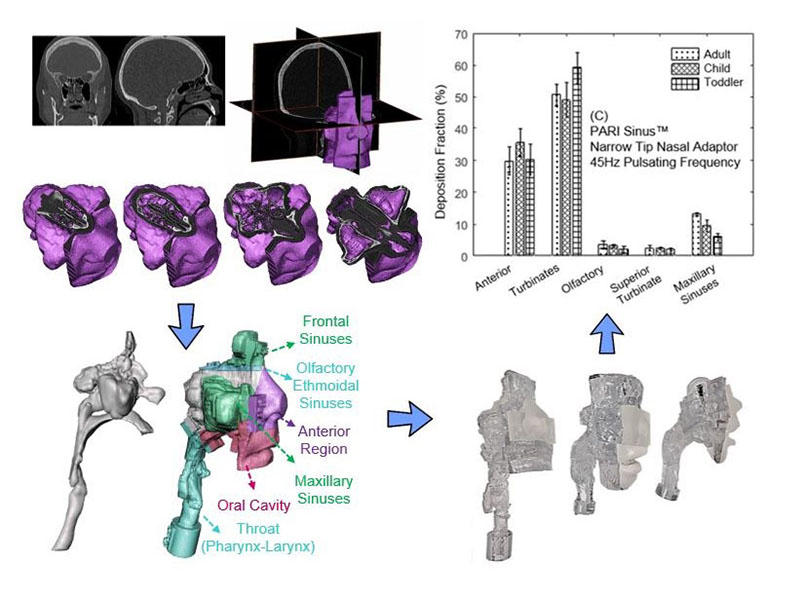
Conversion of CT scans to anatomically-correct nasal airway models to quantify intranasal deposition of medications.
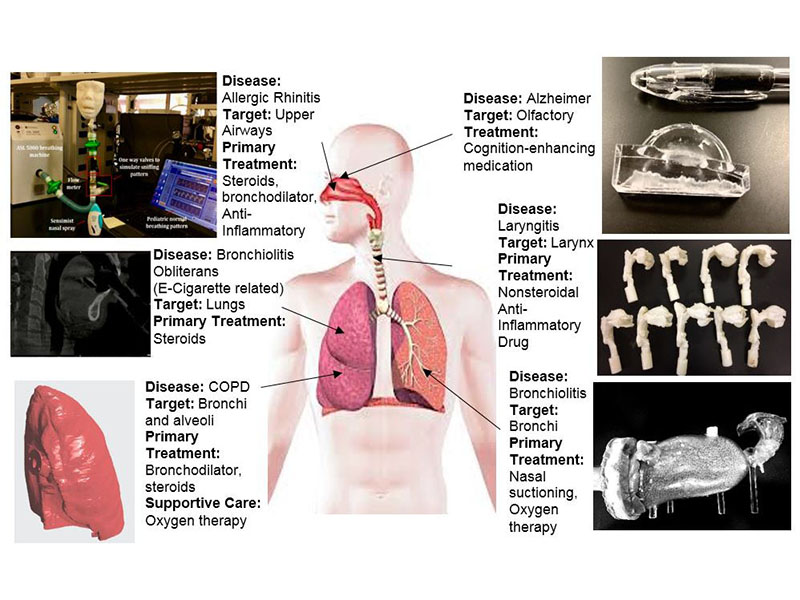
Use of anatomically-correct in vitro models to assess the health-effects of inhaled aerosols and develop respiratory drug delivery techniques for various health conditions.
Worth Longest, Ph.D.
Laboratory Website
The Aerosols in Medicine (AIM) Laboratory, directed by Professor Longest, works to improve the effectiveness of existing and new medications by engineering delivery strategies and devices that achieve intended doses at specific sites within the body while minimizing exposure to other regions. A primary emphasis of the lab is the area of pharmaceutical aerosols, which can be used to treat respiratory diseases, like asthma and COPD, or can be used as an effective method for delivering medications to the body with rapid onset, reduced degradation and without needles. In collaboration with the VCU Department of Pharmaceutics (Prof. Michael Hindle and the Hindle Lab), the lab works to improve targeted drug delivery through a process that includes delivery strategy development, pharmaceutical engineering (including device development and particle engineering) and assessment (including realistic in vitro and biological models). Methods commonly implemented in the lab include computational fluid dynamics (CFD) simulations, in vitro aerosol testing, rapid prototyping of medical devices and 3D printing.

Dry powder inhaler (DPI) developed in the Longest Lab that uses an optimized three-dimensional (3D) rod array structure to generate the correct type of turbulence (high energy in the small eddies) for maximizing powder dispersion with limited input energy.

Computational fluid dynamics (CFD) result of complete-airway aerosol transport and deposition used for developing improved strategies for efficient and targeted pharmaceutical aerosol delivery.